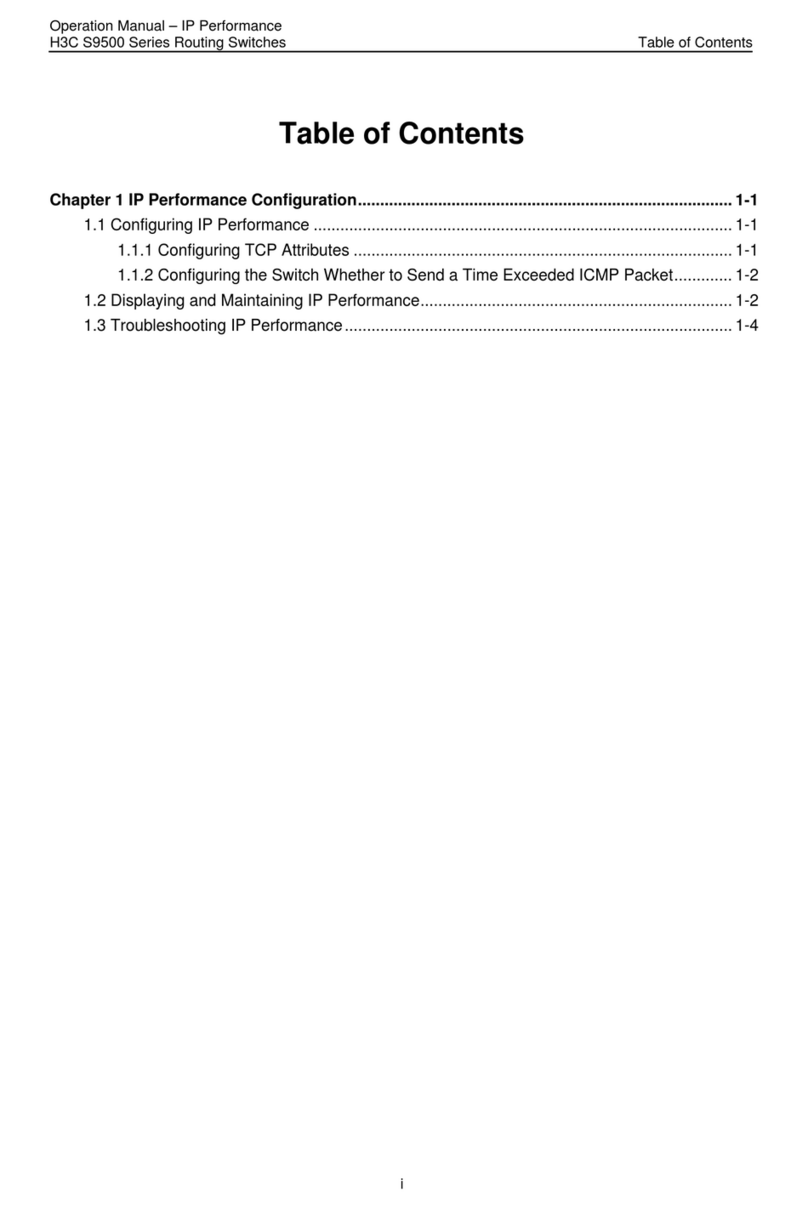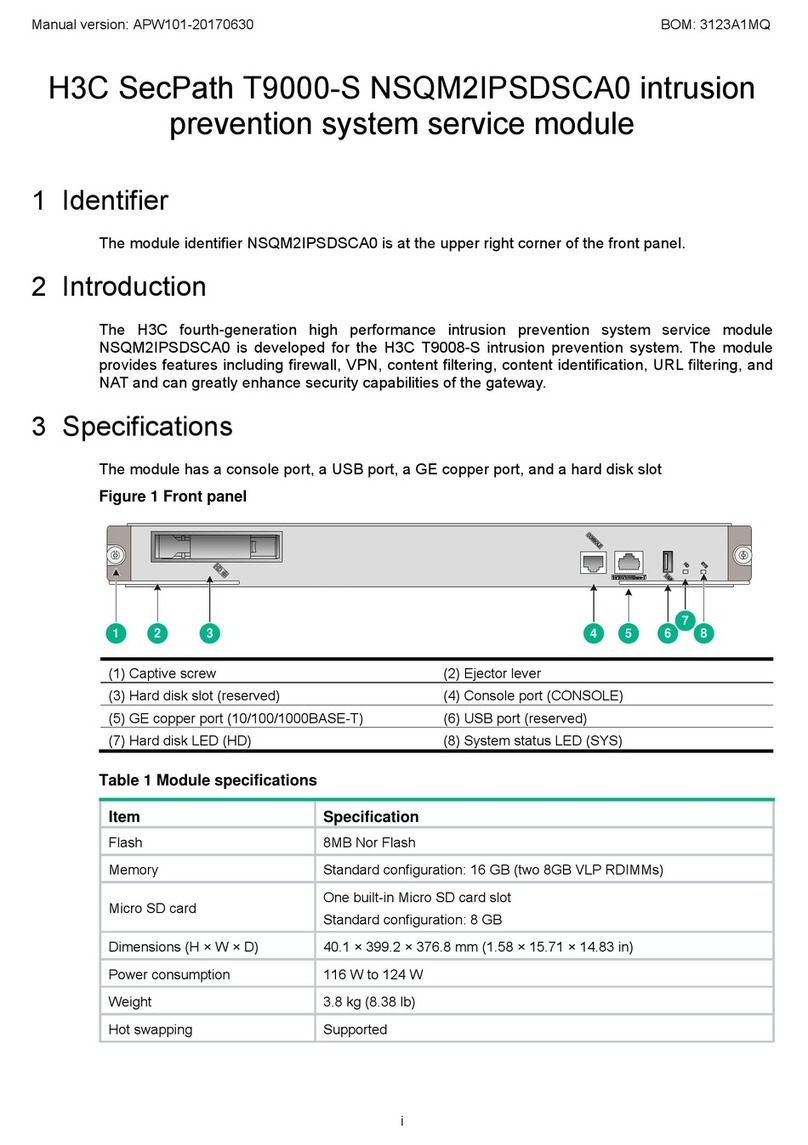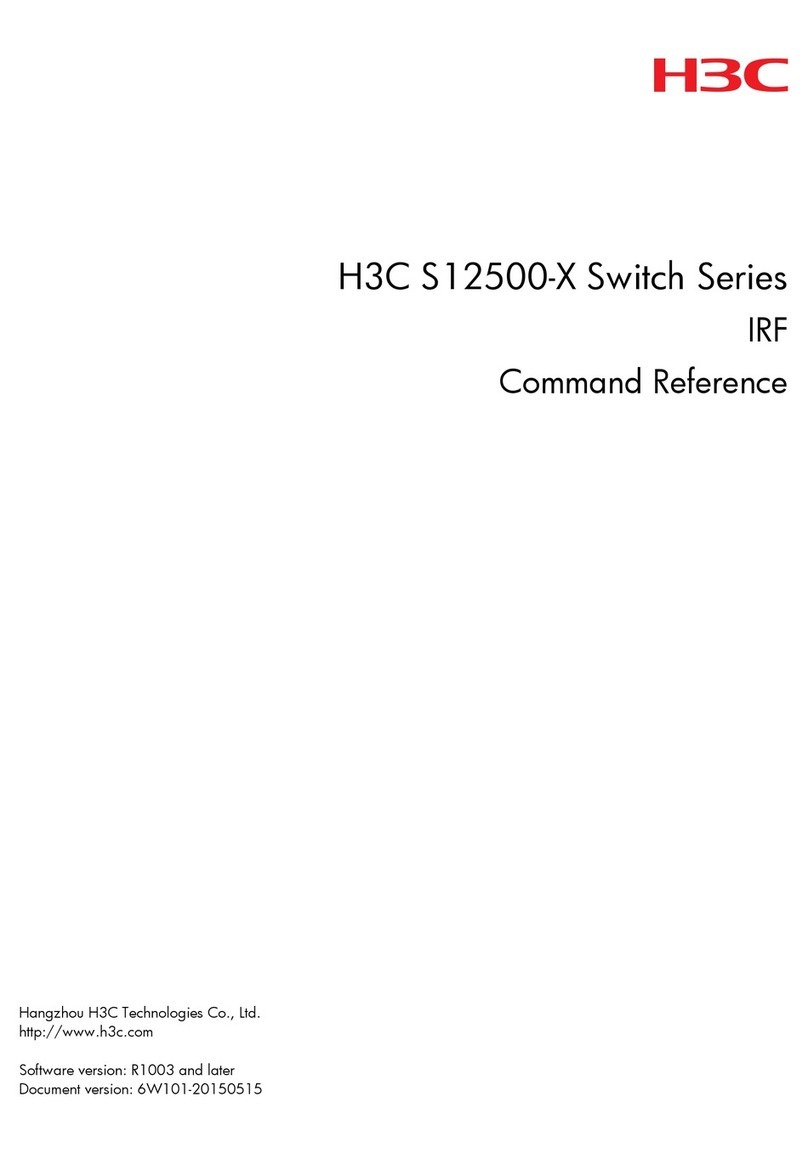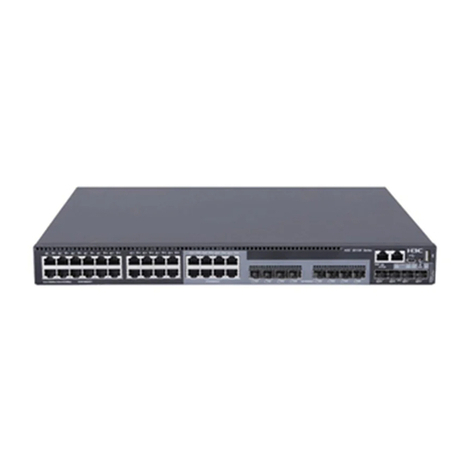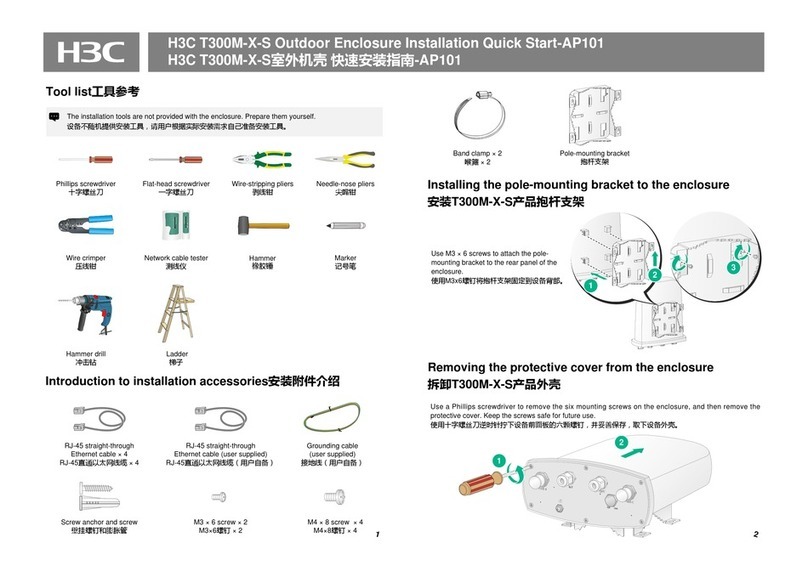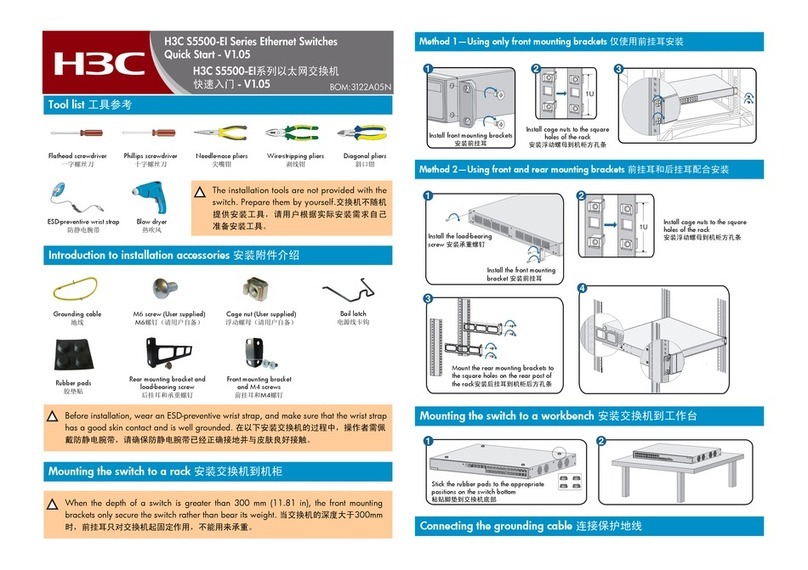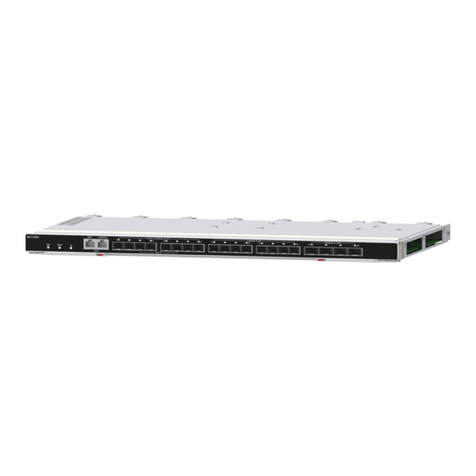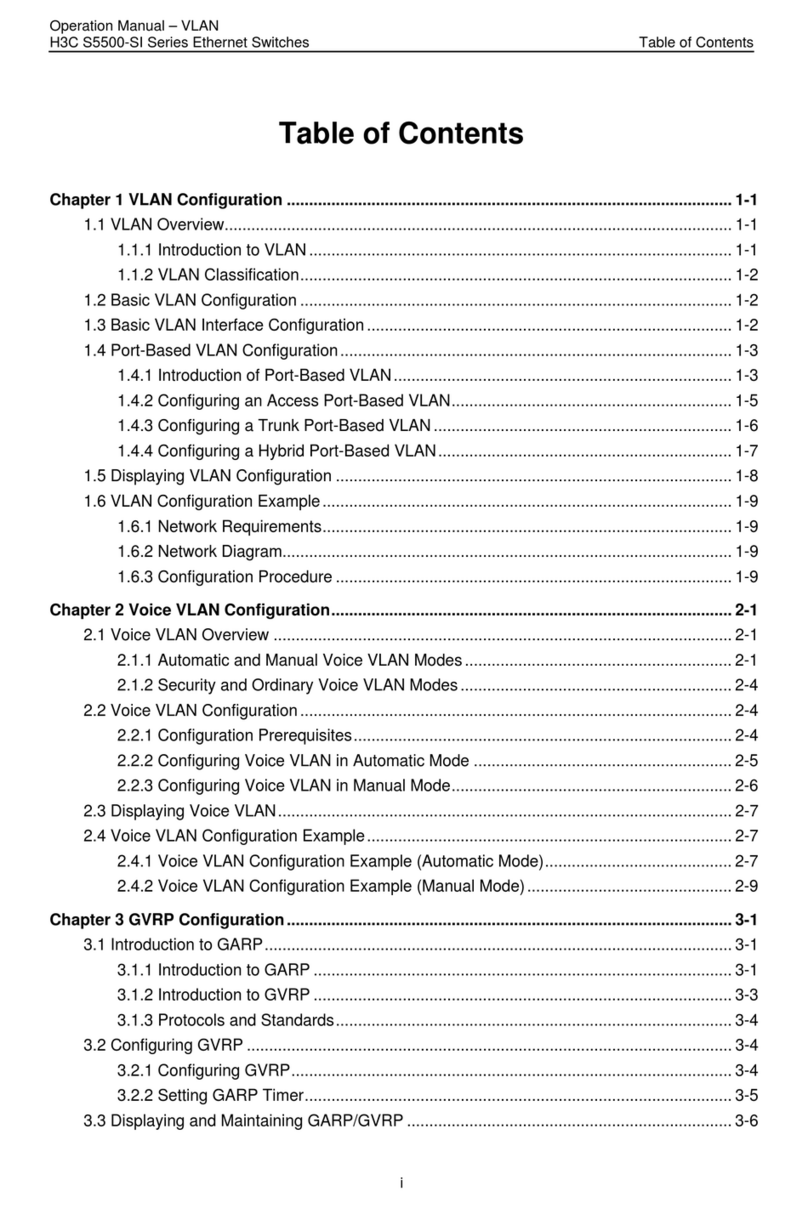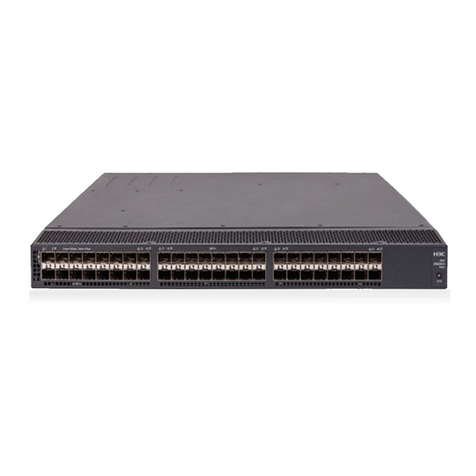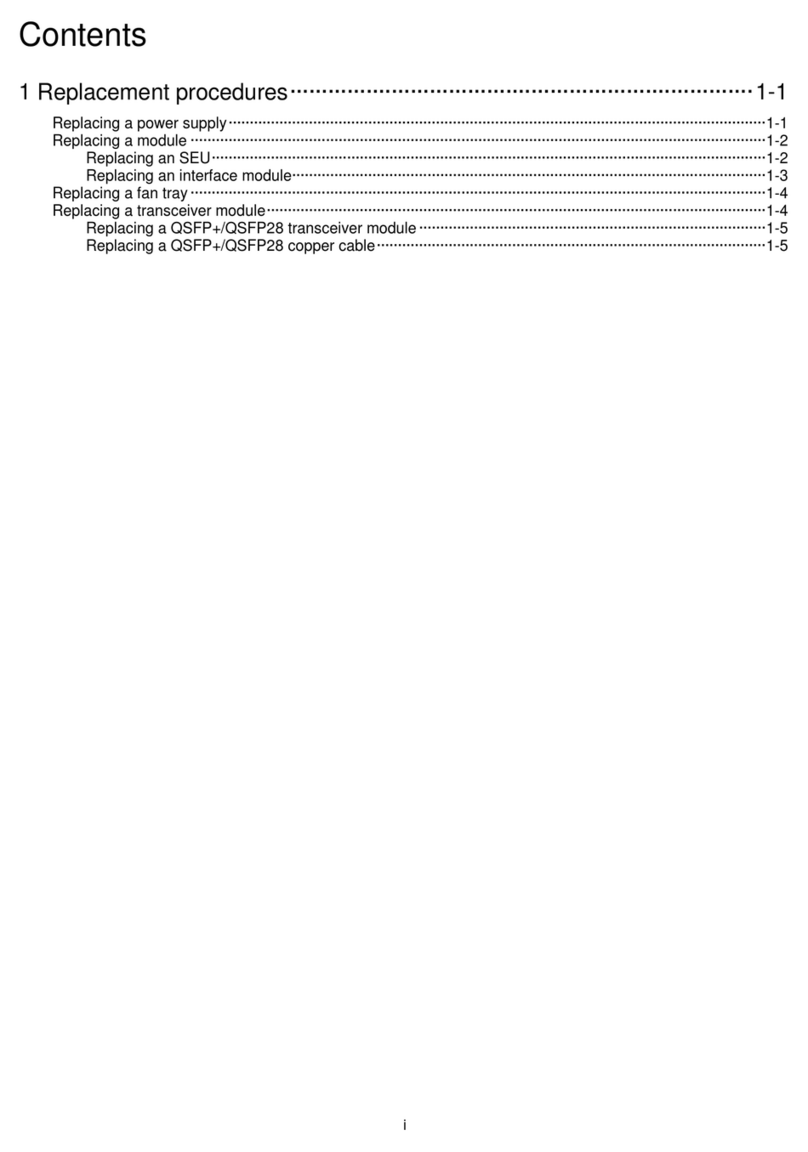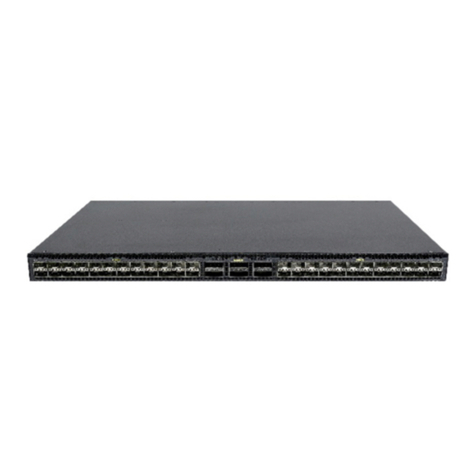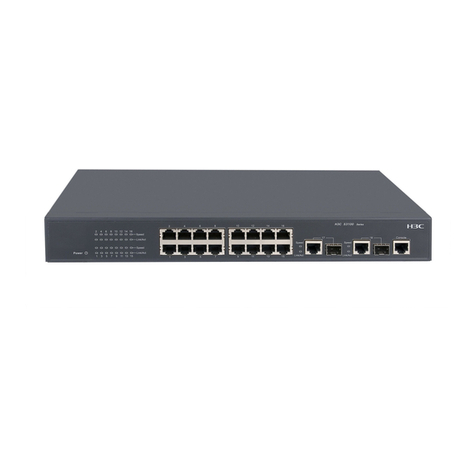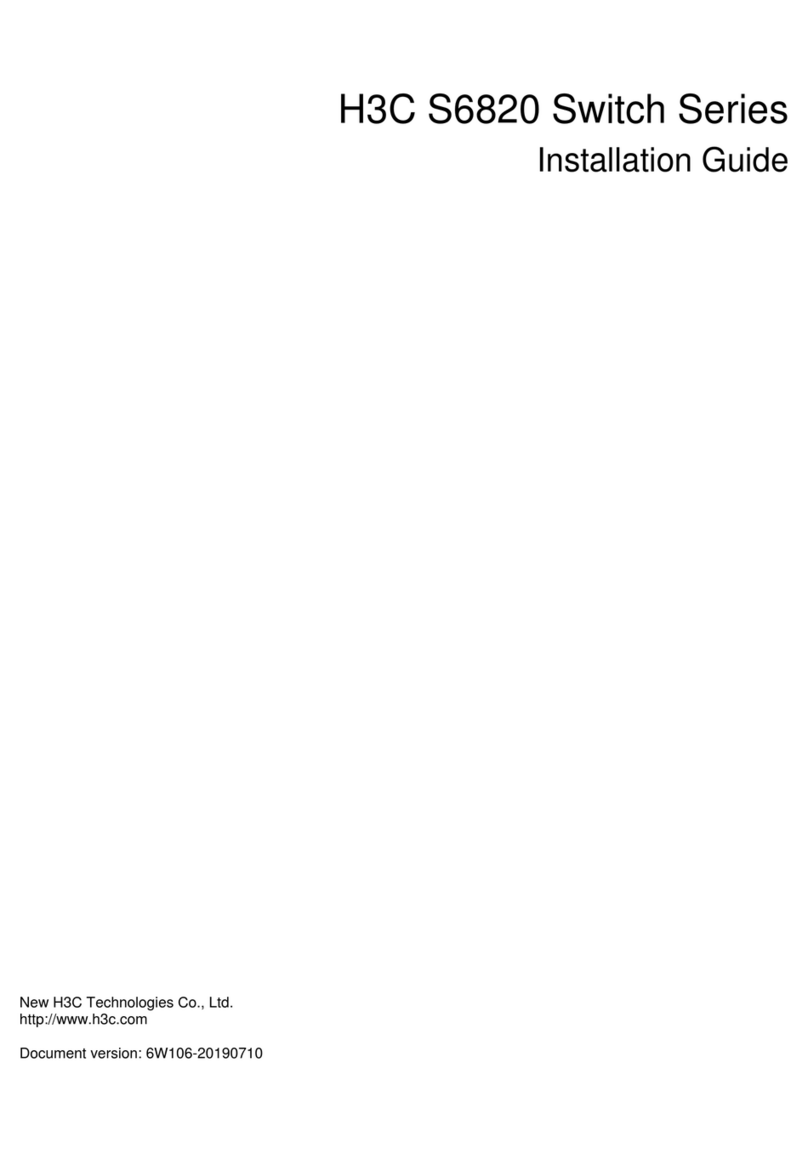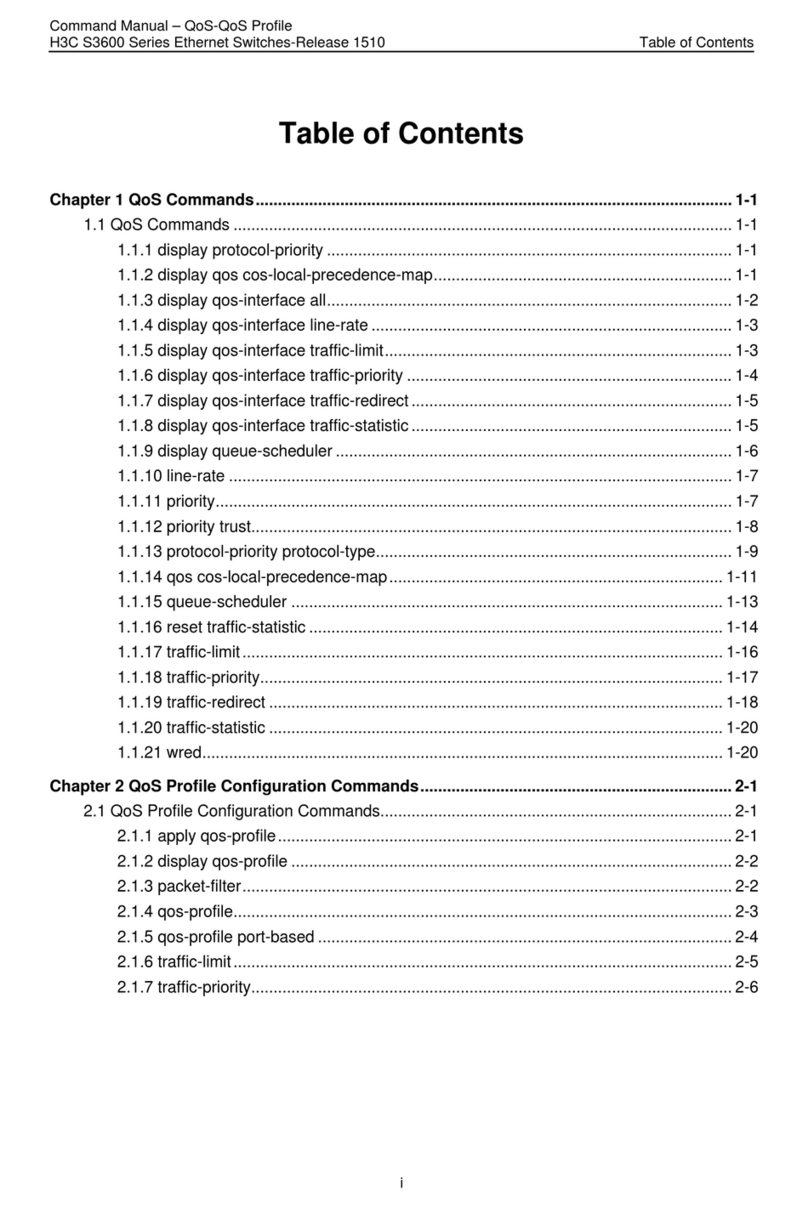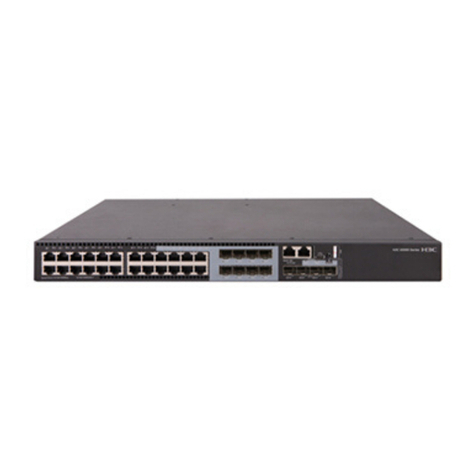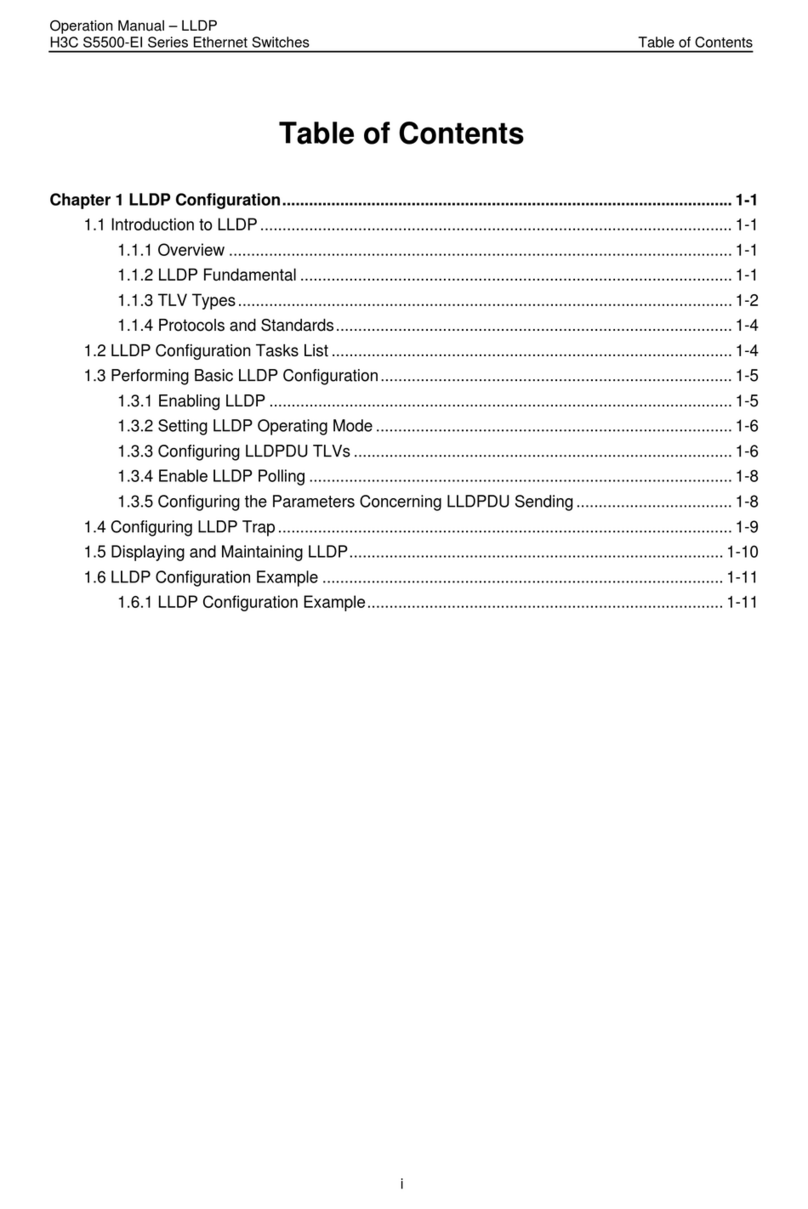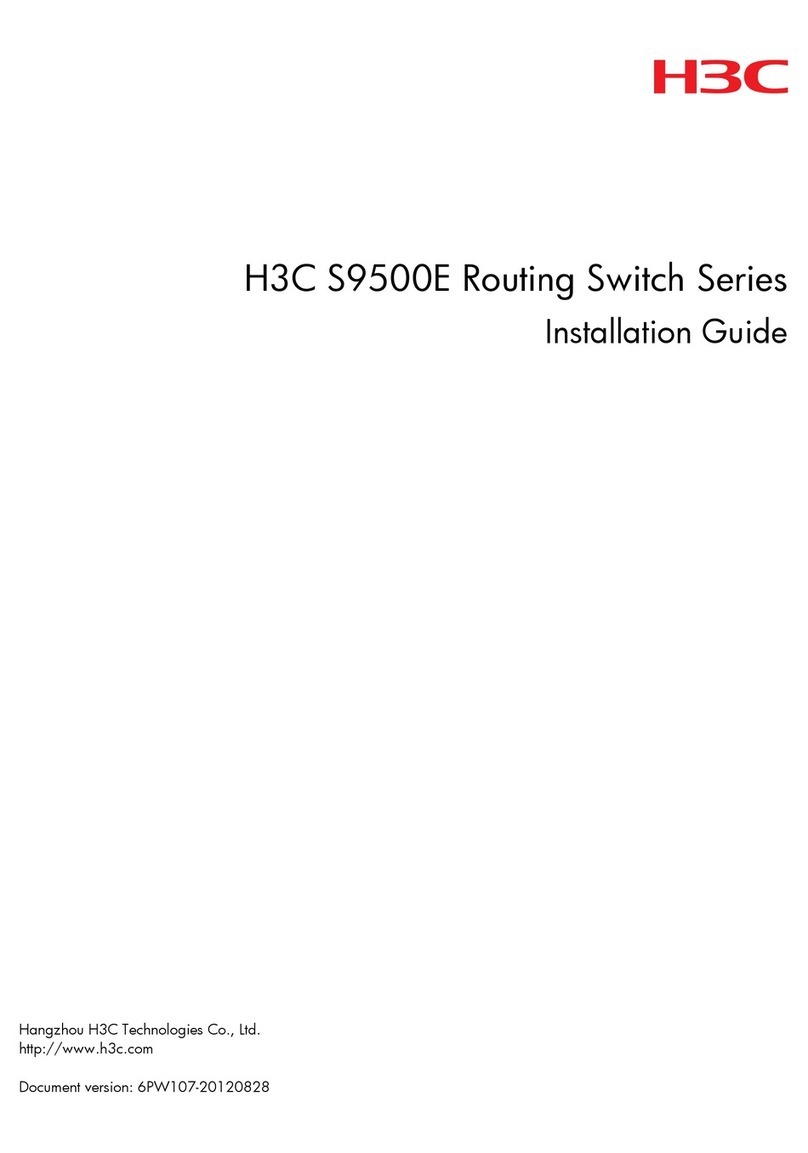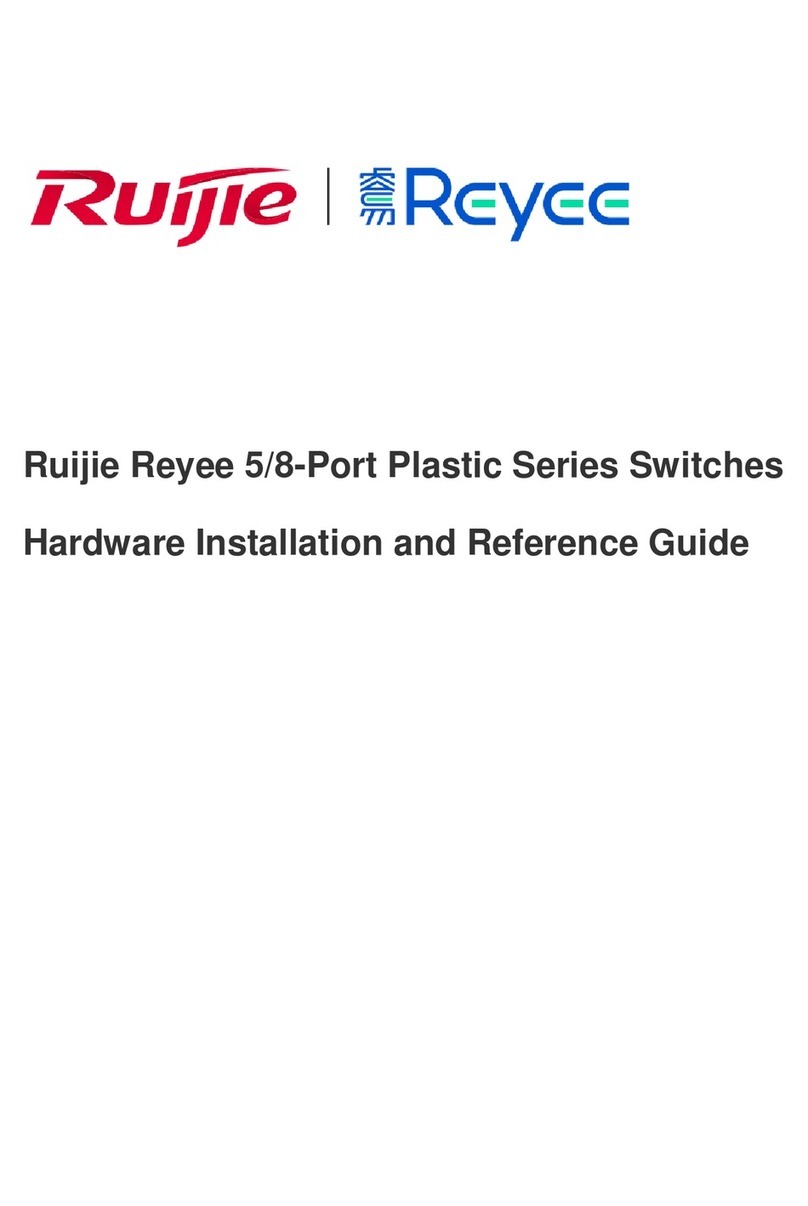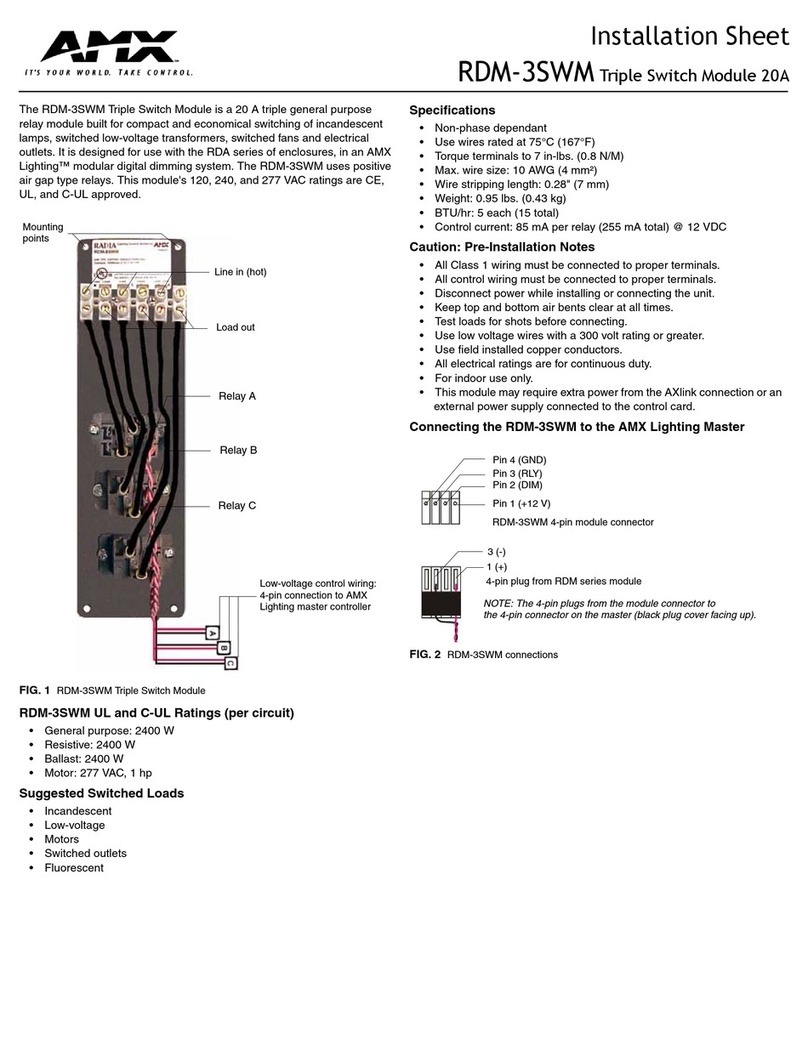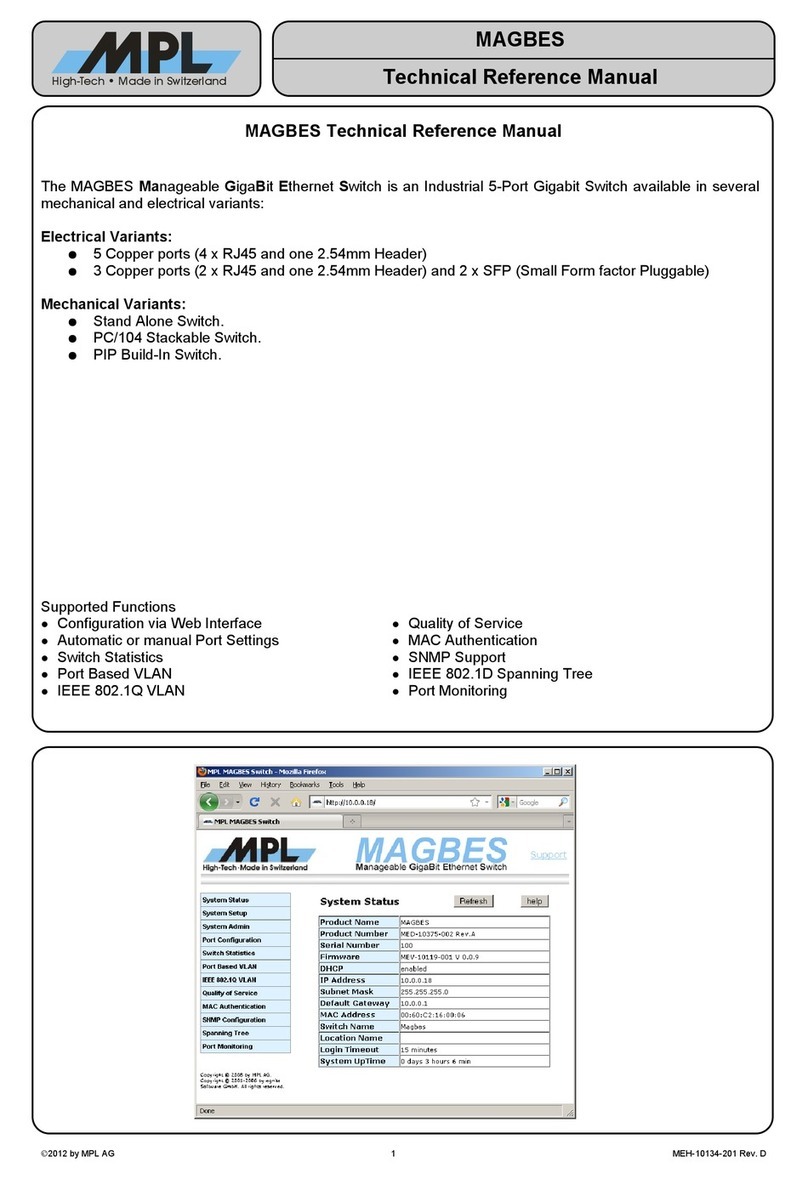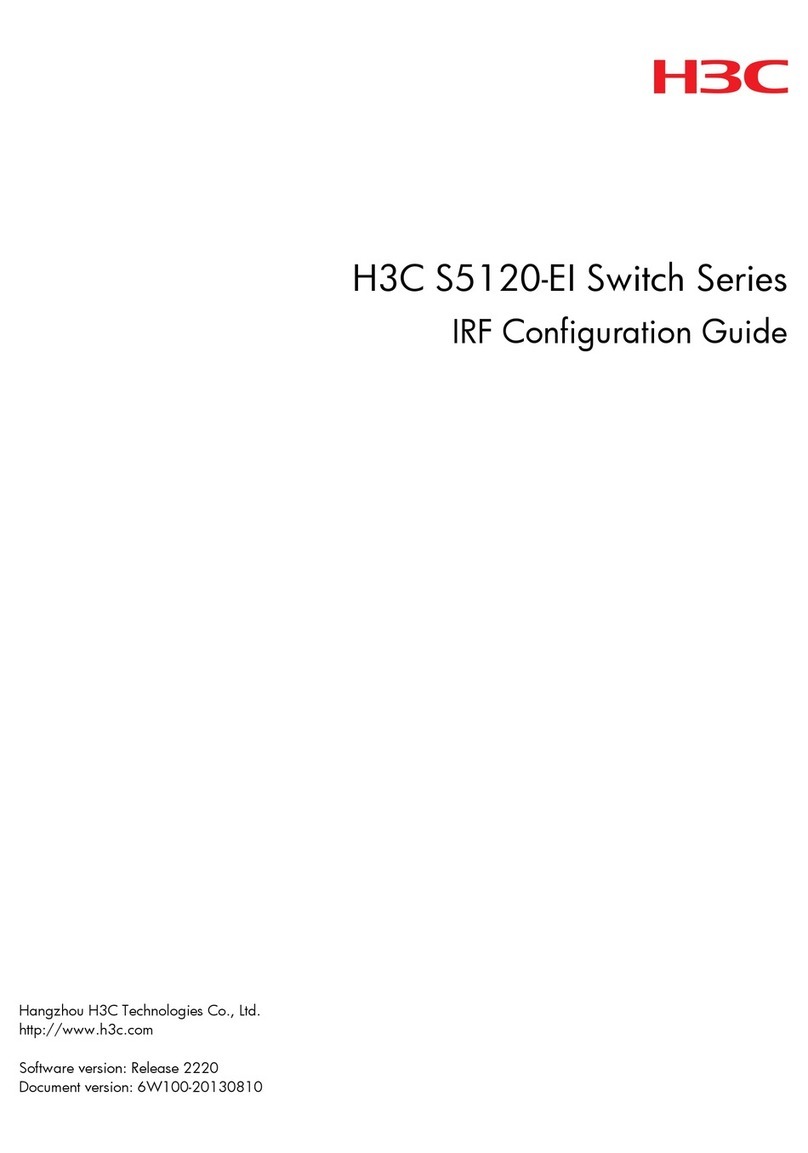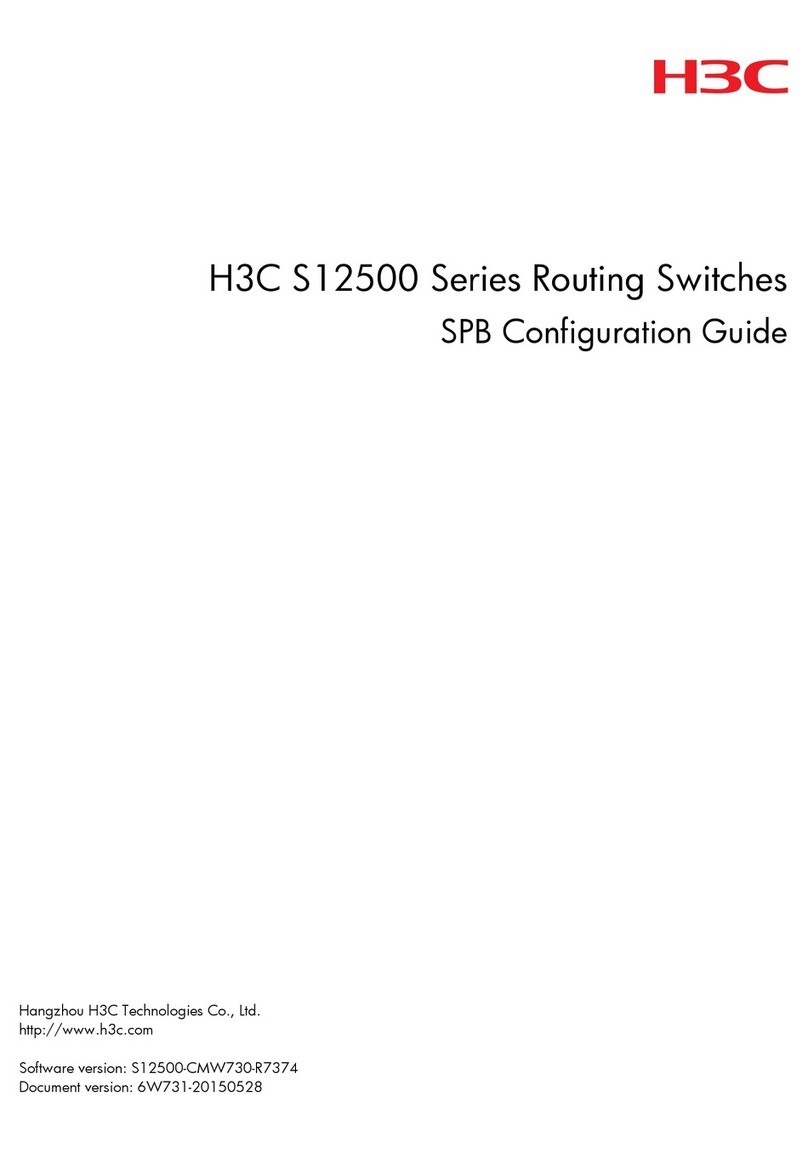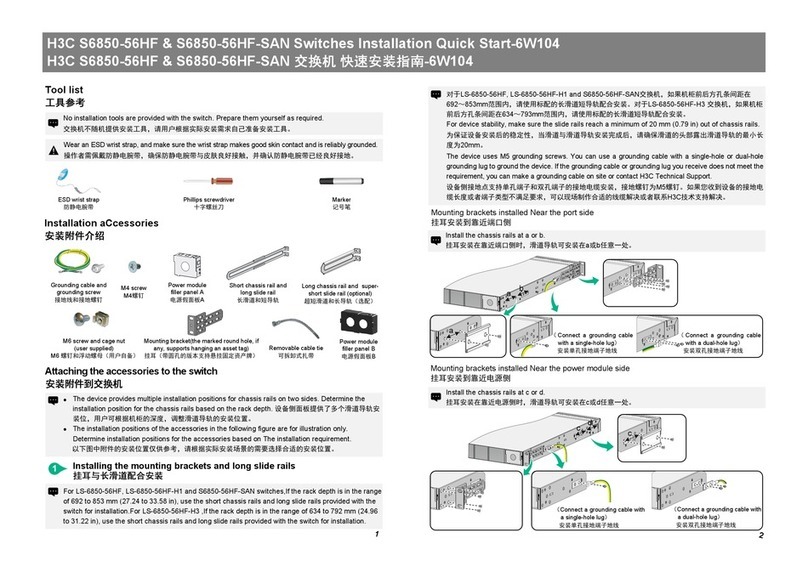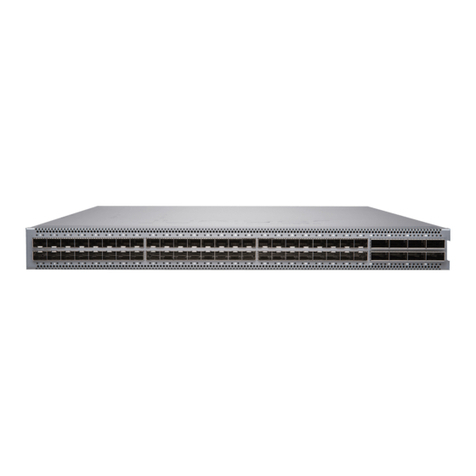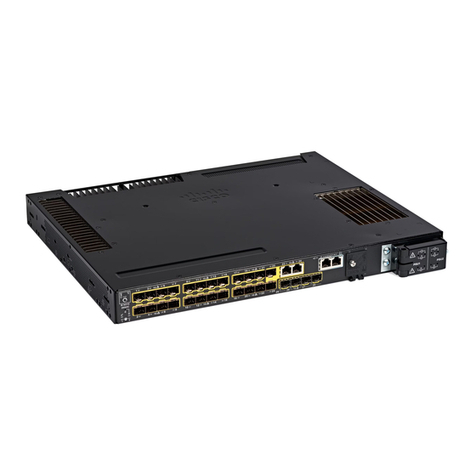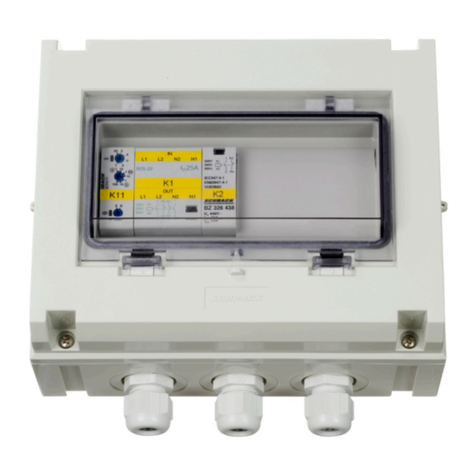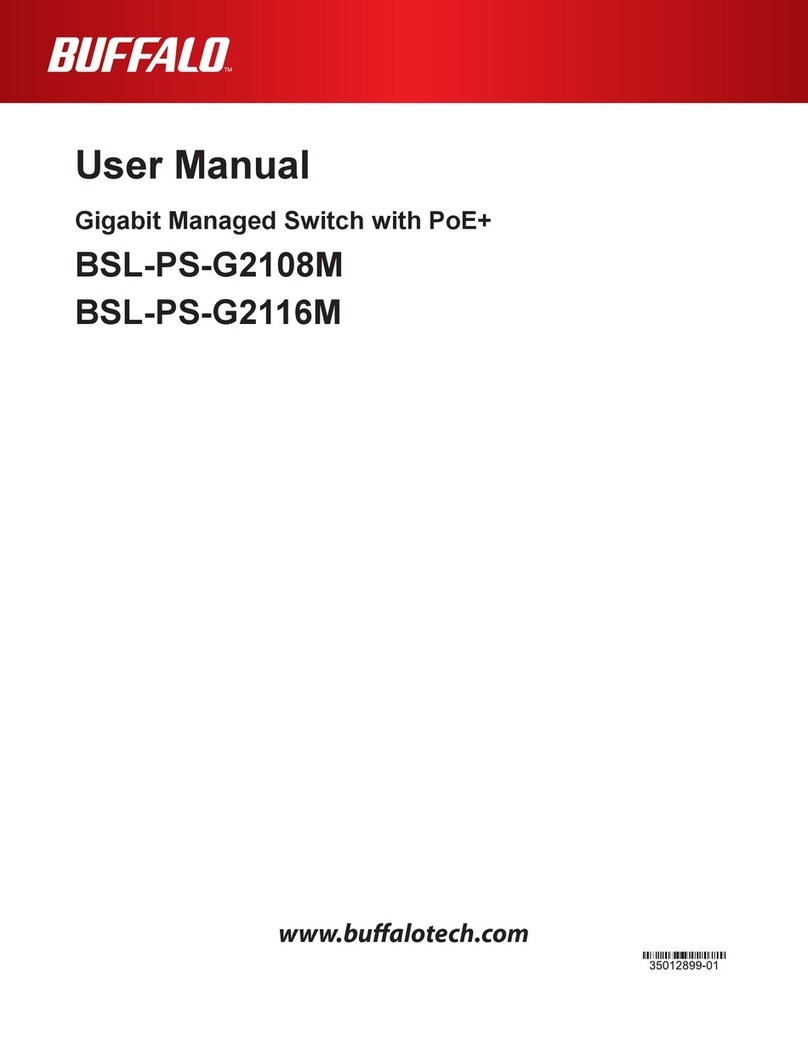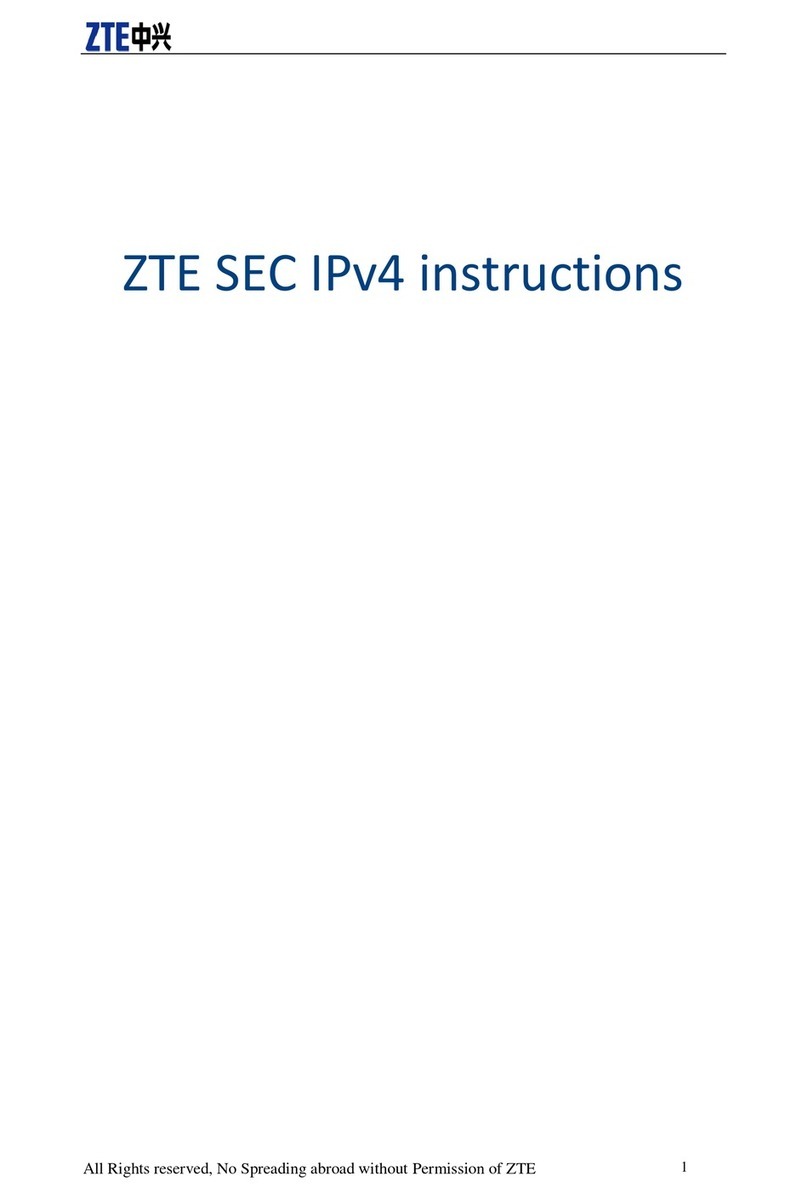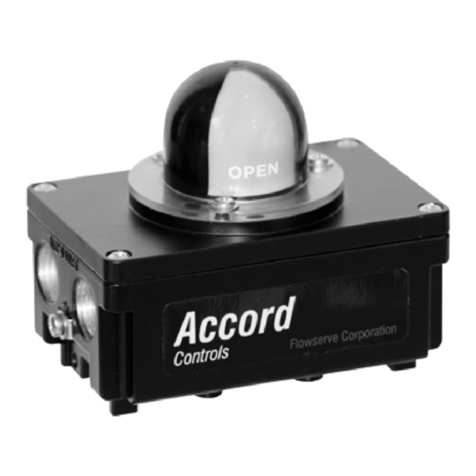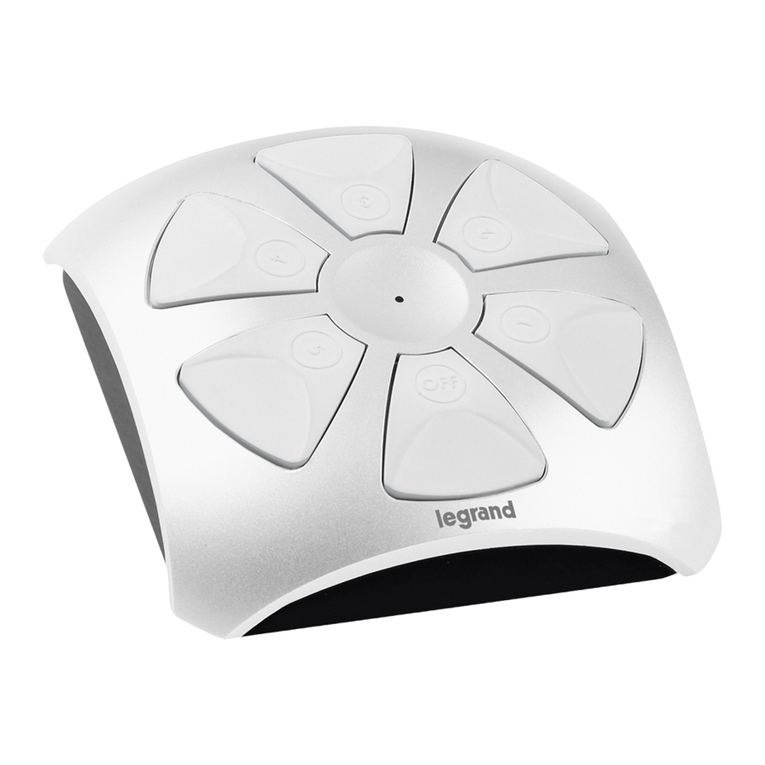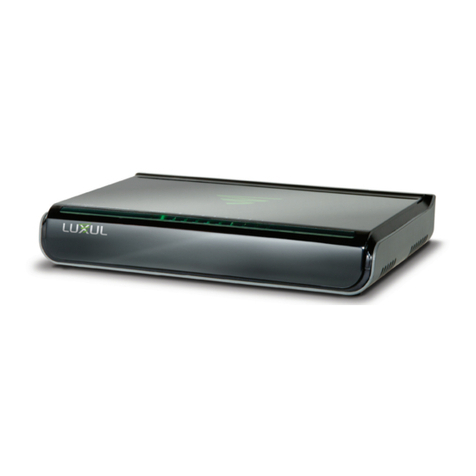
Operation Manual – MSTP
H3C S5500-SI Series Ethernet Switches Chapter 1 MSTP Configuration
1-8
Device Comparison process BPDU of port
after
comparison
zPort CP1 receives the configuration BPDU of
Switch A {0, 0, 0, AP2}. Switch C finds that the
received configuration BPDU is superior to the
configuration BPDU of the local port {2, 0, 2, CP1},
and updates the configuration BPDU of CP1.
zPort CP2 receives the configuration BPDU of port
BP2 of Switch B {1, 0, 1, BP2} before the message
was updated. Switch C finds that the received
configuration BPDU is superior to the configuration
BPDU of the local port {2, 0, 2, CP2}, and updates
the configuration BPDU of CP2.
CP1: {0, 0, 0,
AP2}
CP2: {1, 0, 1,
BP2}
By comparison:
zThe configuration BPDUs of CP1 is elected as the
optimum configuration BPDU, so CP1 is identified
as the root port, the configuration BPDUs of which
will not be changed.
zSwitch C compares the computed designated port
configuration BPDU {0, 10, 2, CP2} with the
configuration BPDU of CP2, and CP2 becomes the
designated port, and the configuration BPDU of this
port will be replaced with the computed
configuration BPDU.
Root port CP1:
{0, 0, 0, AP2}
Designated
port CP2:
{0, 10, 2, CP2}
zNext, port CP2 receives the updated configuration
BPDU of Switch B {0, 5, 1, BP2}. Because the
received configuration BPDU is superior to its old
one, Switch C launches a BPDU update process.
zAt the same time, port CP1 receives configuration
BPDUs periodically from Switch A. Switch C does
not launch an update process after comparison.
CP1: {0, 0, 0,
AP2}
CP2: {0, 5, 1,
BP2}
Switch
C
By comparison:
zBecause the root path cost of CP2 (9) (root path
cost of the BPDU (5) + path cost corresponding to
CP2 (4)) is smaller than the root path cost of CP1
(10) (root path cost of the BPDU (0) + path cost
corresponding to CP2 (10)), the BPDU of CP2 is
elected as the optimum BPDU, and CP2 is elected
as the root port, the messages of which will not be
changed.
zAfter comparison between the configuration BPDU
of CP1 and the computed designated port
configuration BPDU, port CP1 is blocked, with the
configuration BPDU of the port remaining
unchanged, and the port will not receive data from
Switch A until a spanning tree computing process is
triggered by a new condition, for example, the link
from Switch B to Switch C becomes down.
Blocked port
CP2:
{0, 0, 0, AP2}
Root port CP2:
{0, 5, 1, BP2}
After the comparison processes described in the table above, a spanning tree with
Switch A as the root bridge is stabilized, as shown in Figure 1-3.




















